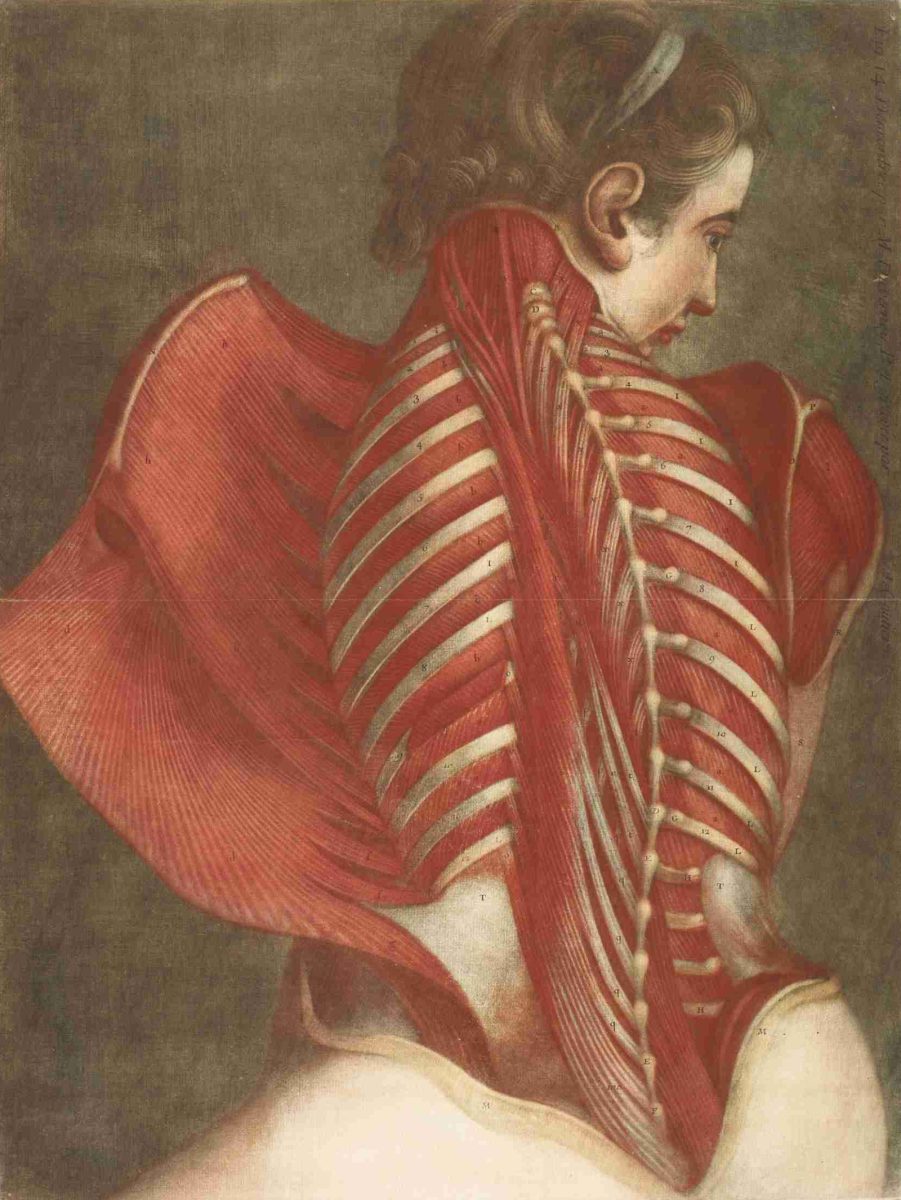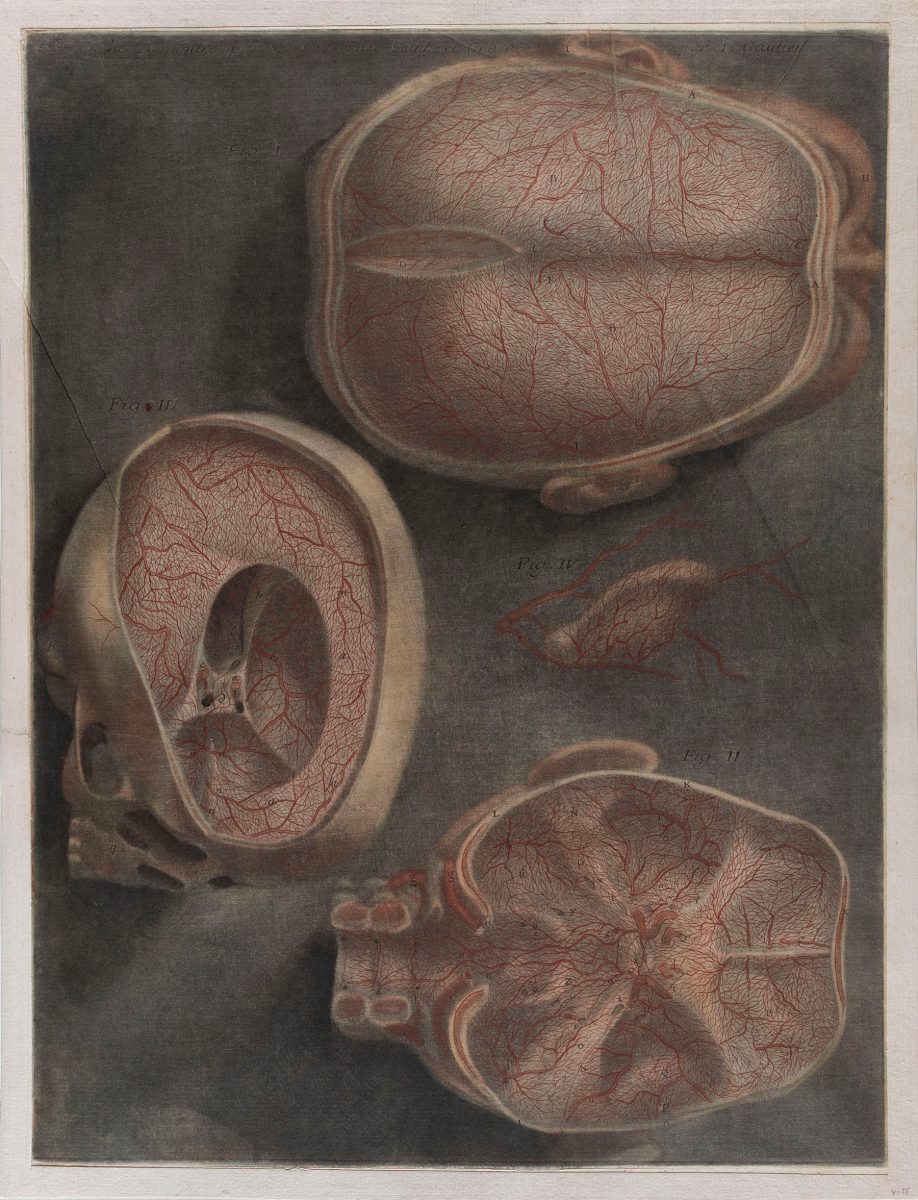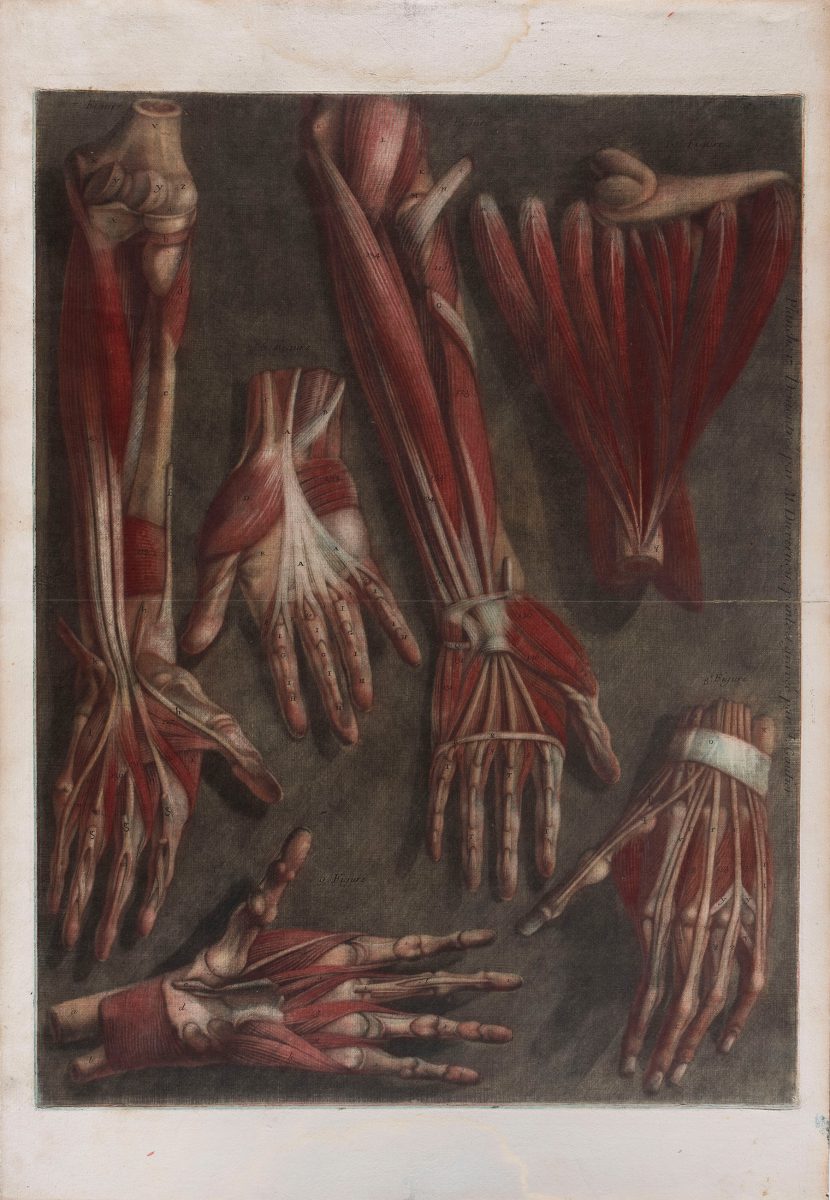Interest in the three-colour printing process (also known as trichromy) at the Atelier de Saint-Prex arose after discussions between members on certain coloured compositions by Albert Yersin. Indeed, these compositions led Pietro Sarto and Michel Duplain to investigate the properties of coloured inks for themselves. Their purchase of Jacques Fabien Gautier-Dagoty's book La Myologie complète en couleur, featuring 17 trichromatic prints, prompted Atelier members and Florian Rodari to propose an exhibition on this process, which remains underknown. This major project was presented in 1996, first at the Bibliothèque nationale de France, then at the Olympic Museum in Lausanne, under the title Anatomie de la couleur.
Jacques-Fabien Gautier-Dagoty is undoubtedly best known for his innovations in trichromy, a revolutionary coloured printing technique. This process involves three separate prints for each of the three primary hues, which combine to suggest the full chromatic spectrum. It was not, however, the fruit of Gautier's own work. Indeed, it was invented by the German engraver Jacob Christoph Le Blon (1667-1741). Gautier was only a young apprentice engraver when, in 1738, he spent a few weeks in Le Blon's Paris workshop, where Le Blon, after extensive research in Holland and England, was granted a royal privilege to use his invention. When Le Blon died in 1741, Gautier succeeded in obtaining, by royal decree, the exclusive right to the use of trichromy. Fully aware of its commercial potential, Gautier multiplied his scientific illustration projects. In order to obtain a higher degree of tonal contrast in his prints, he modified Le Blon’s process, adding a fourth black plate to the ensemble. This tended to deaden the colouristic sensitivity of his prints, yet Gautier's early production nevertheless demonstrated a real mastery of technique. One sees this clearly in his Myologie, a series of anatomical studies of human musculature, which includes the famous, disturbing plate known as L'Ange anatomique (The Anatomical Angel). Despite his fierce determination to make his mark in the world of scientific illustration, Gautier's venture ended in commercial failure. Accused of usurping Le Blon's invention, he withdrew to Marseille. After returning to Paris around 1764, Gautier-Dagoty - who had added his mother's name to his surname - conceived ambitious new scientific publishing projects involving his five sons, but his prints never regained their previous level of quality. Gautier's obstinacy and his determination to monopolize trichromy proved fatal to his commercial venture using this marvelous technique.



